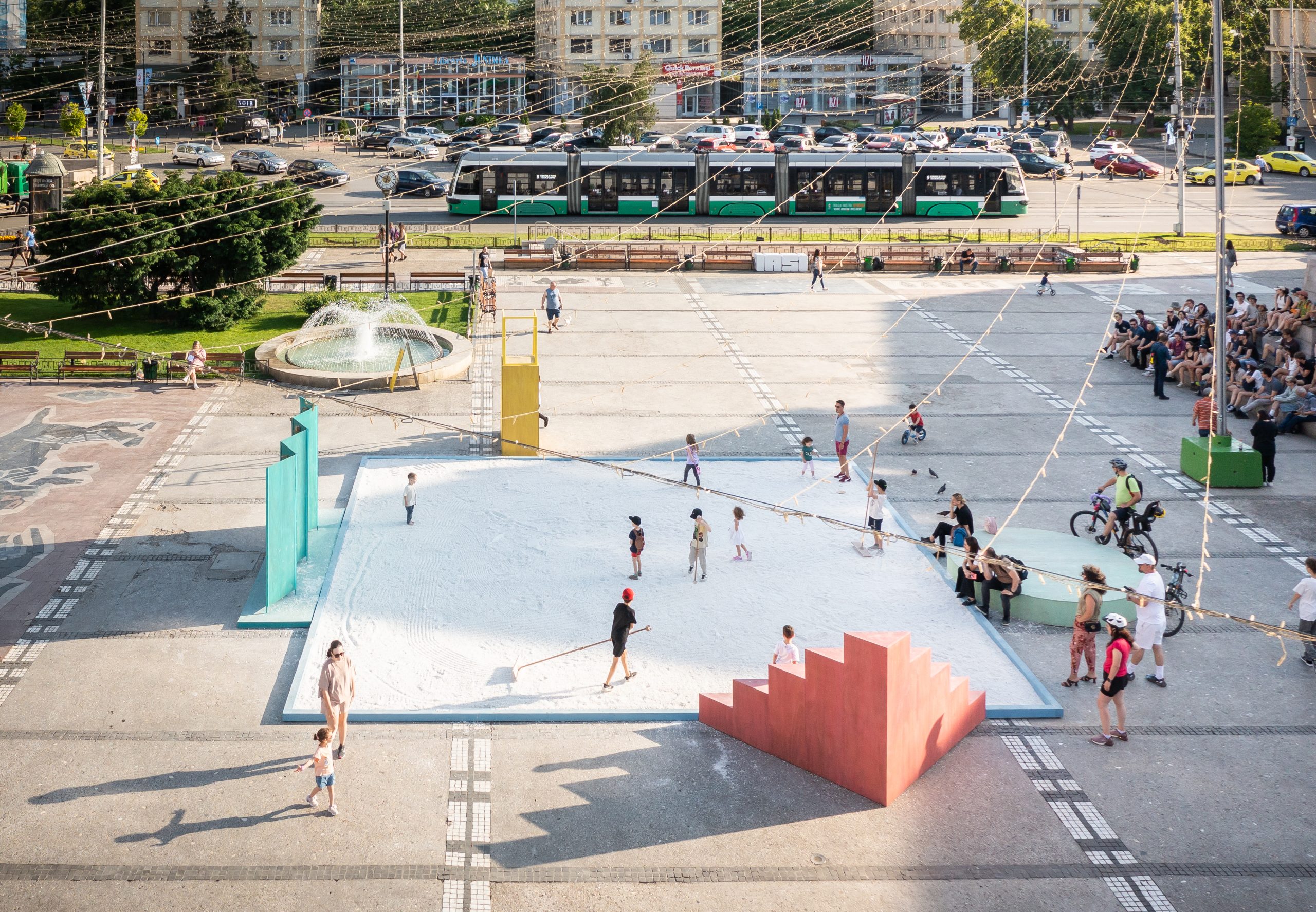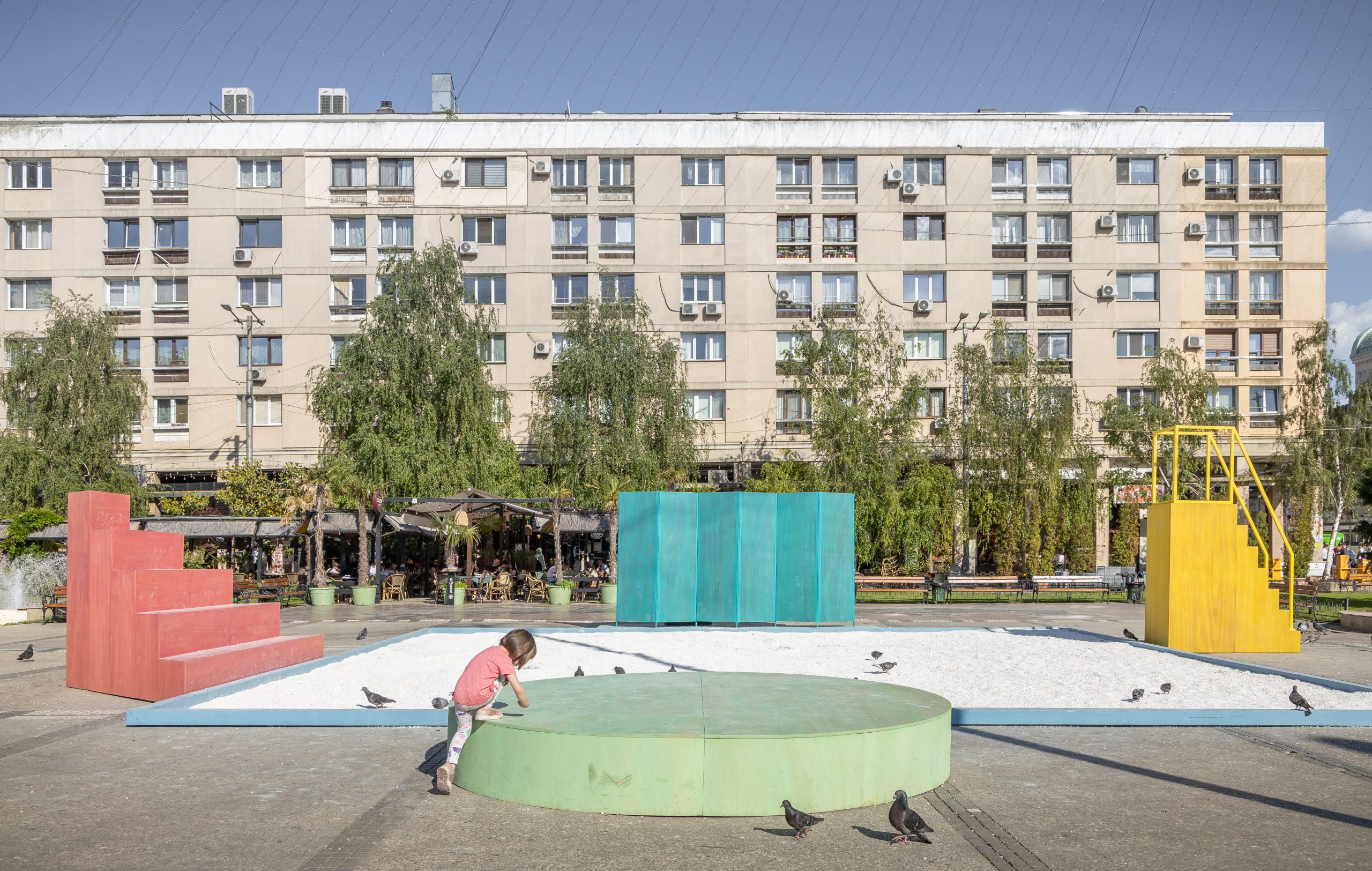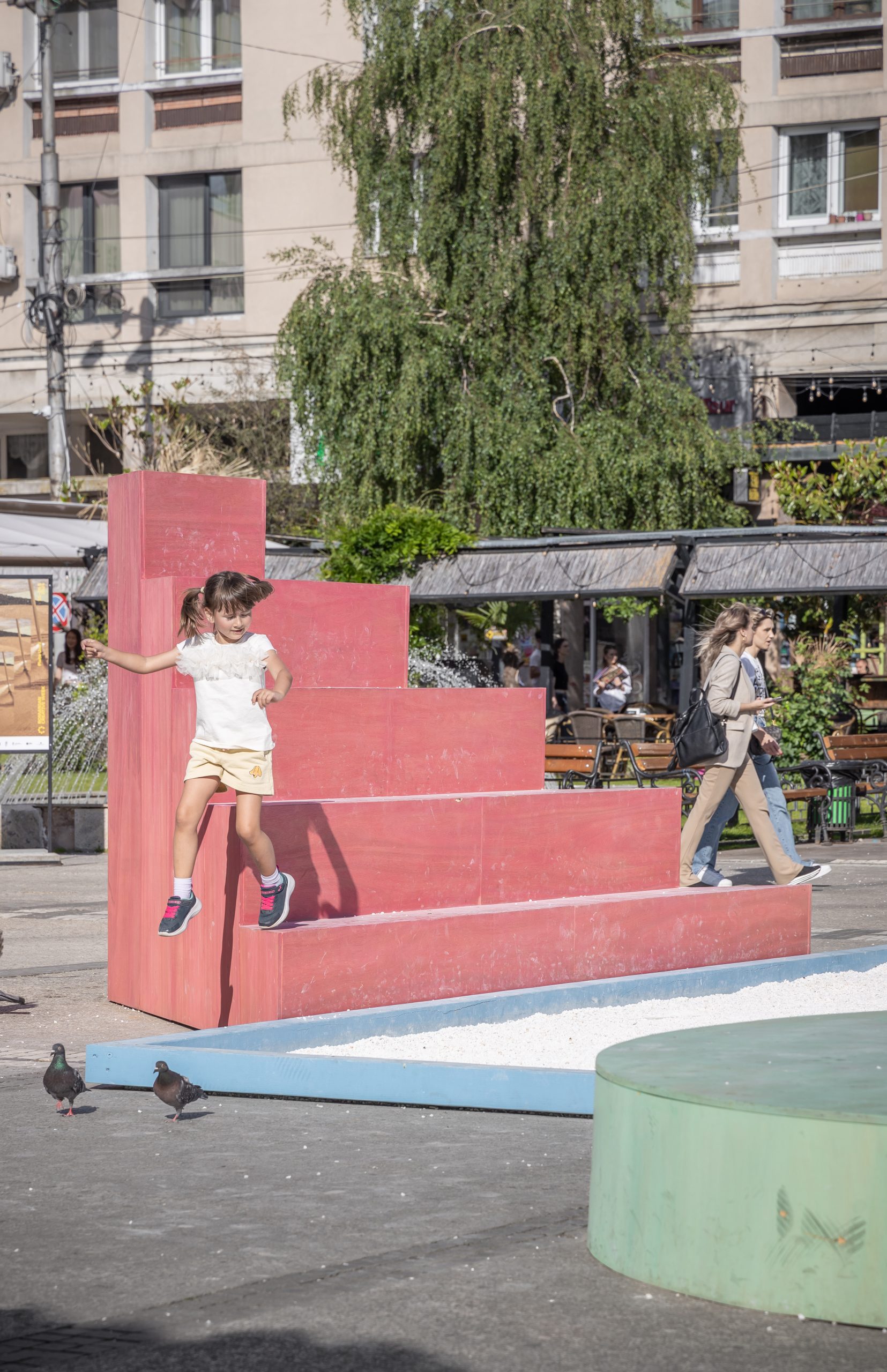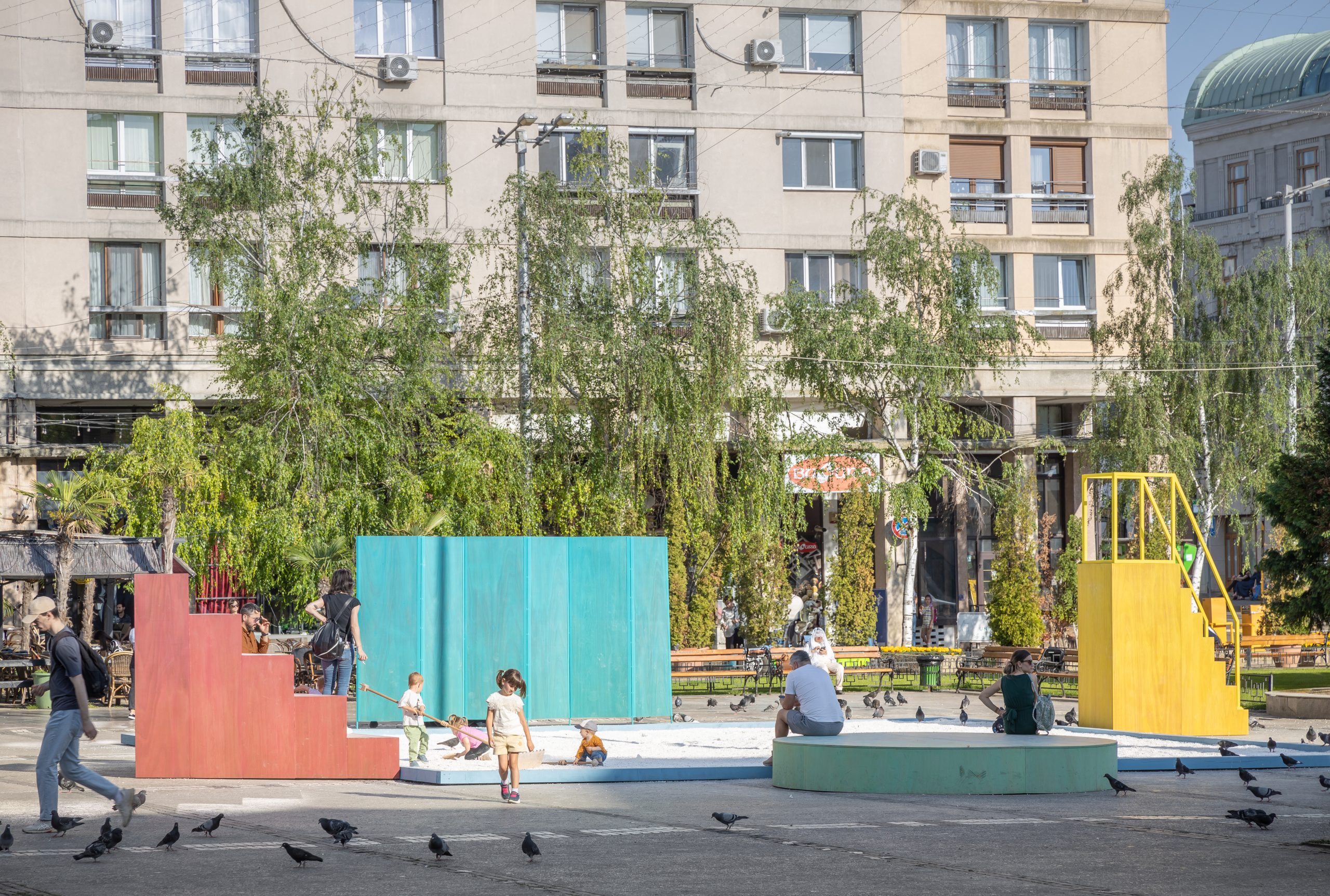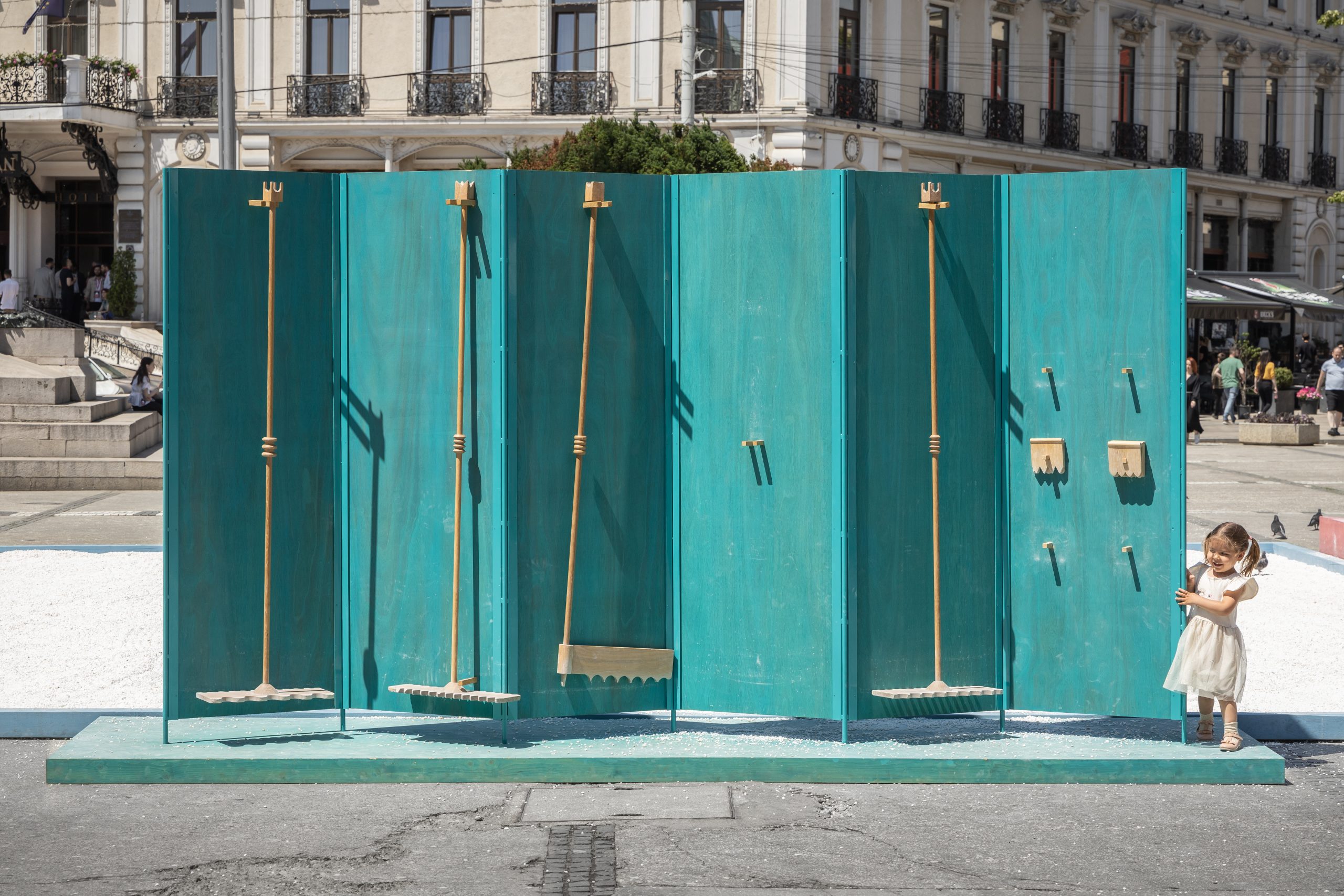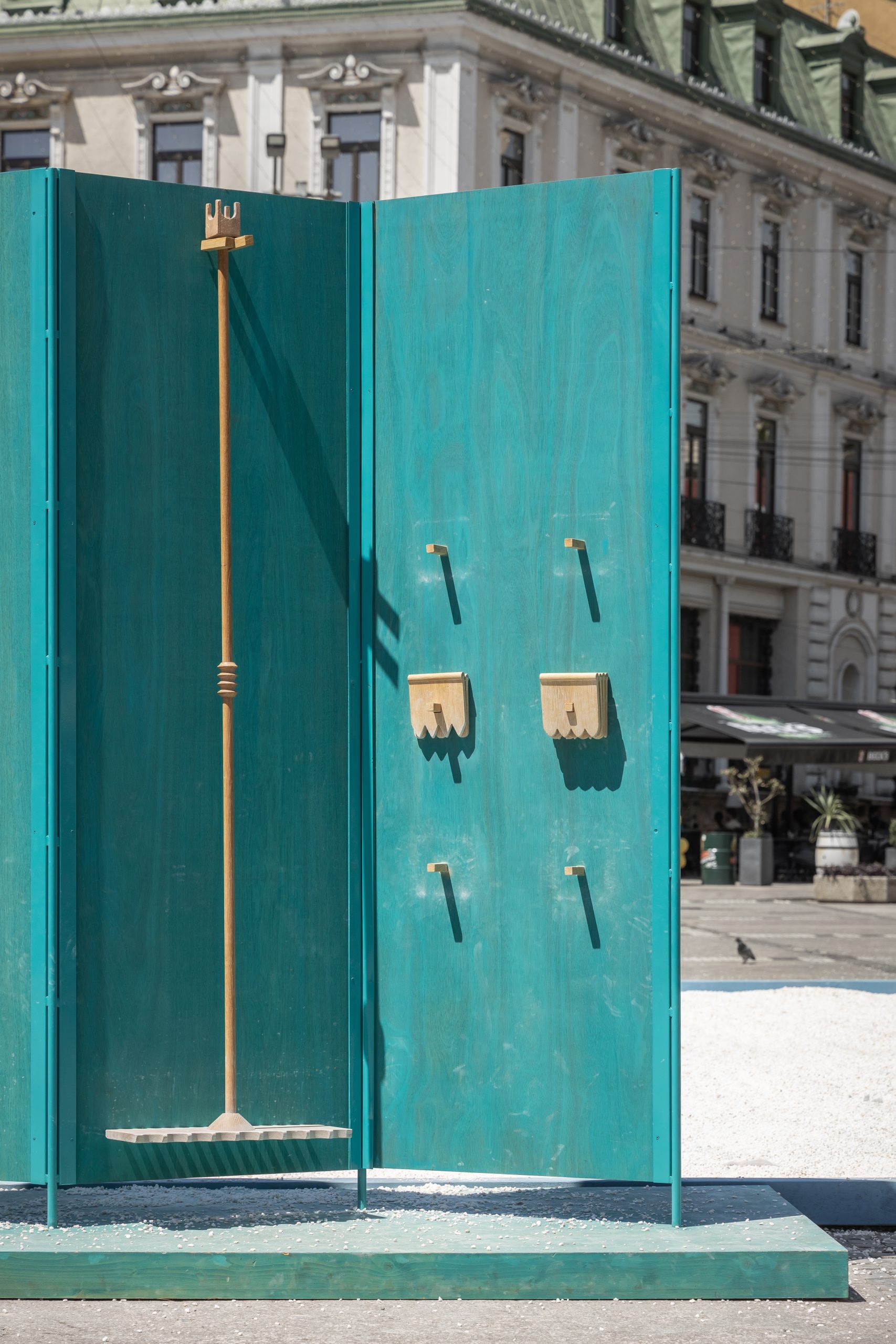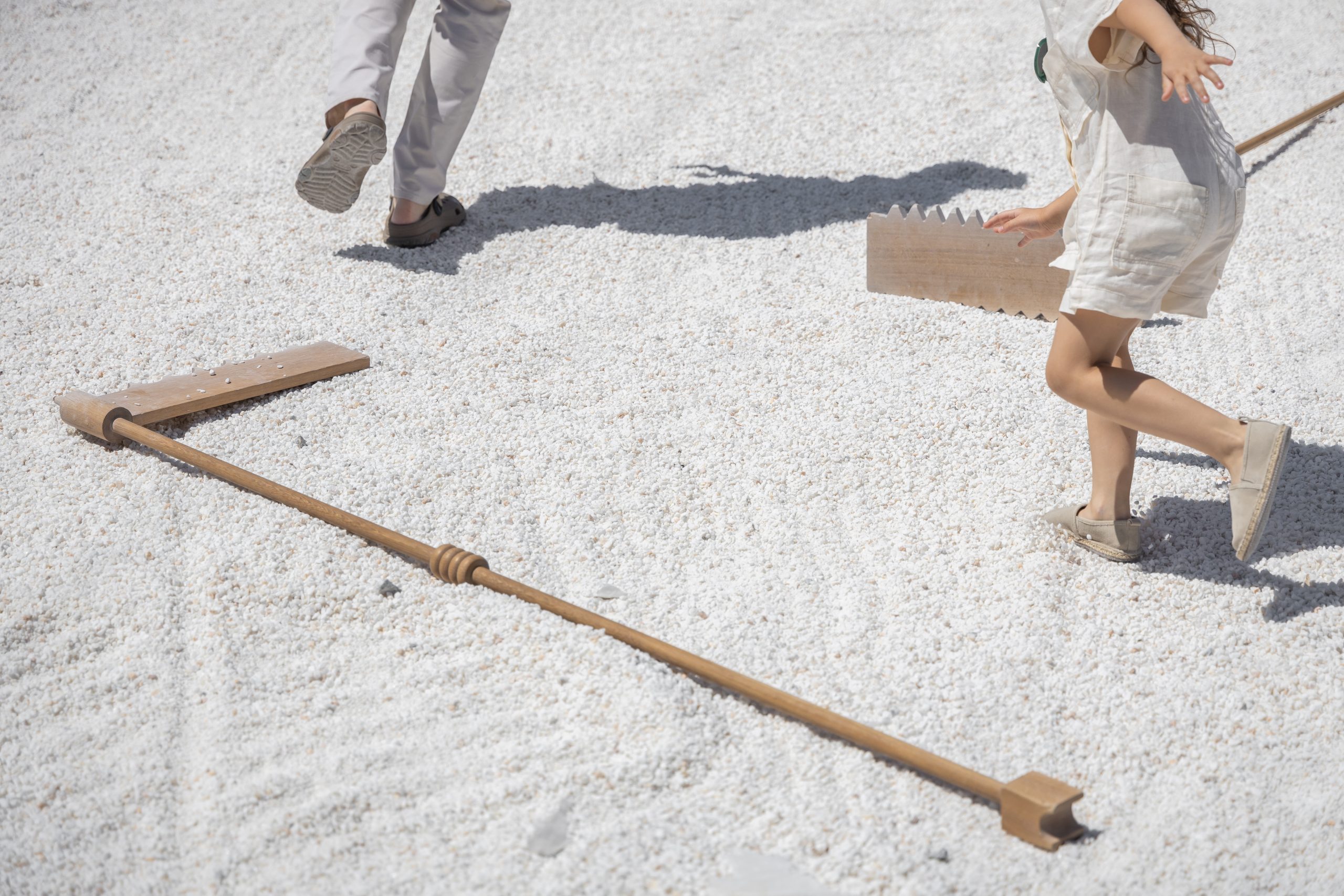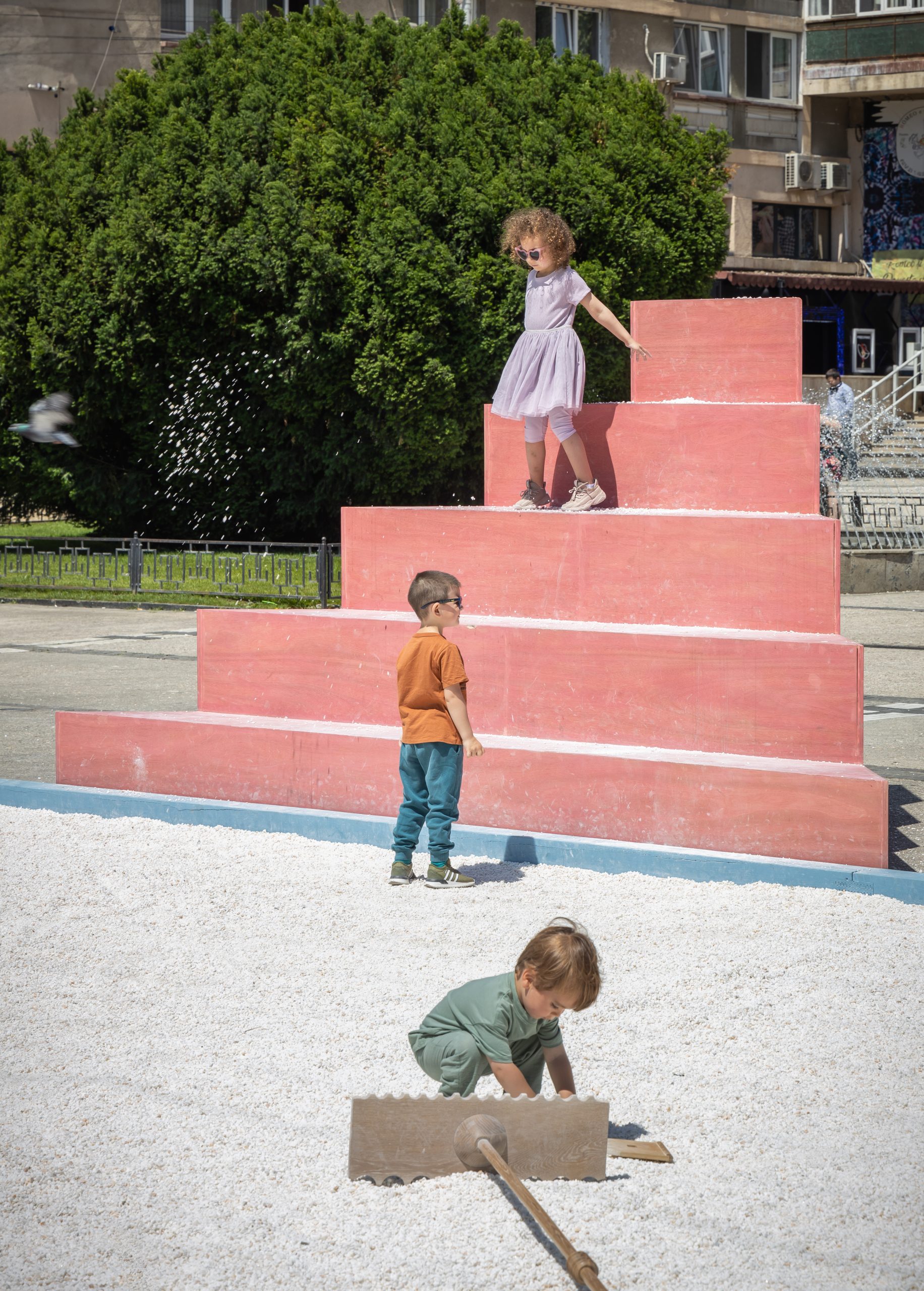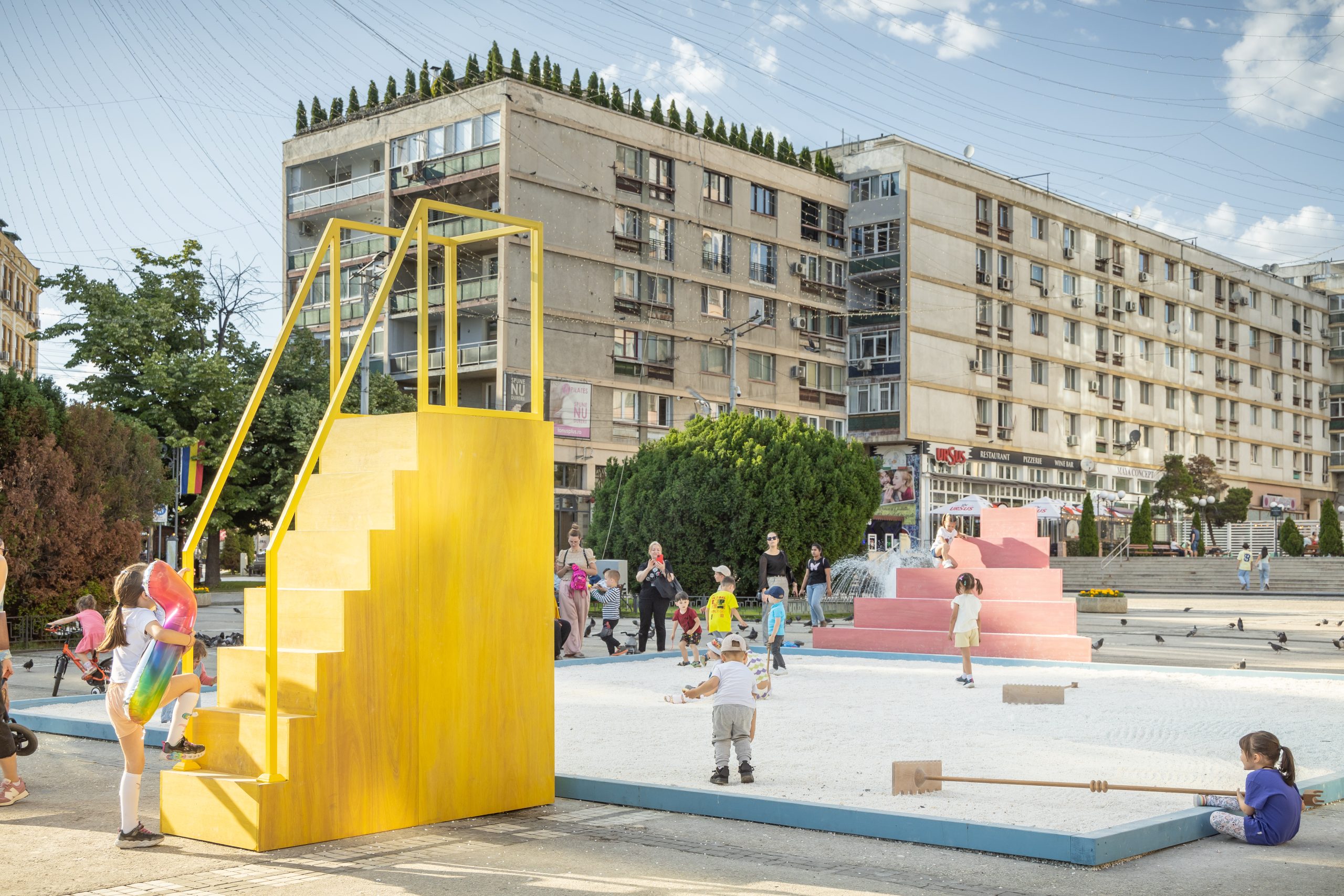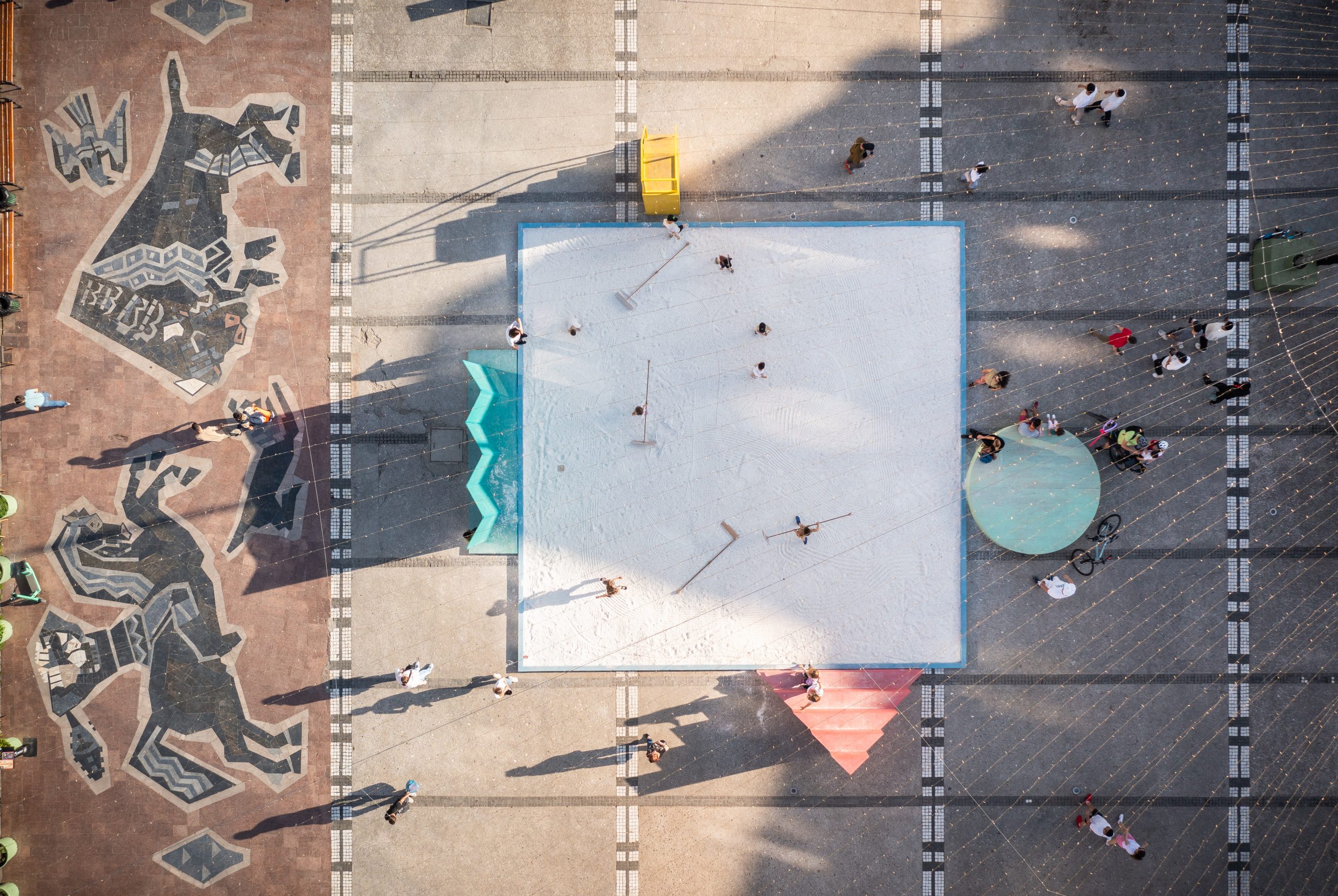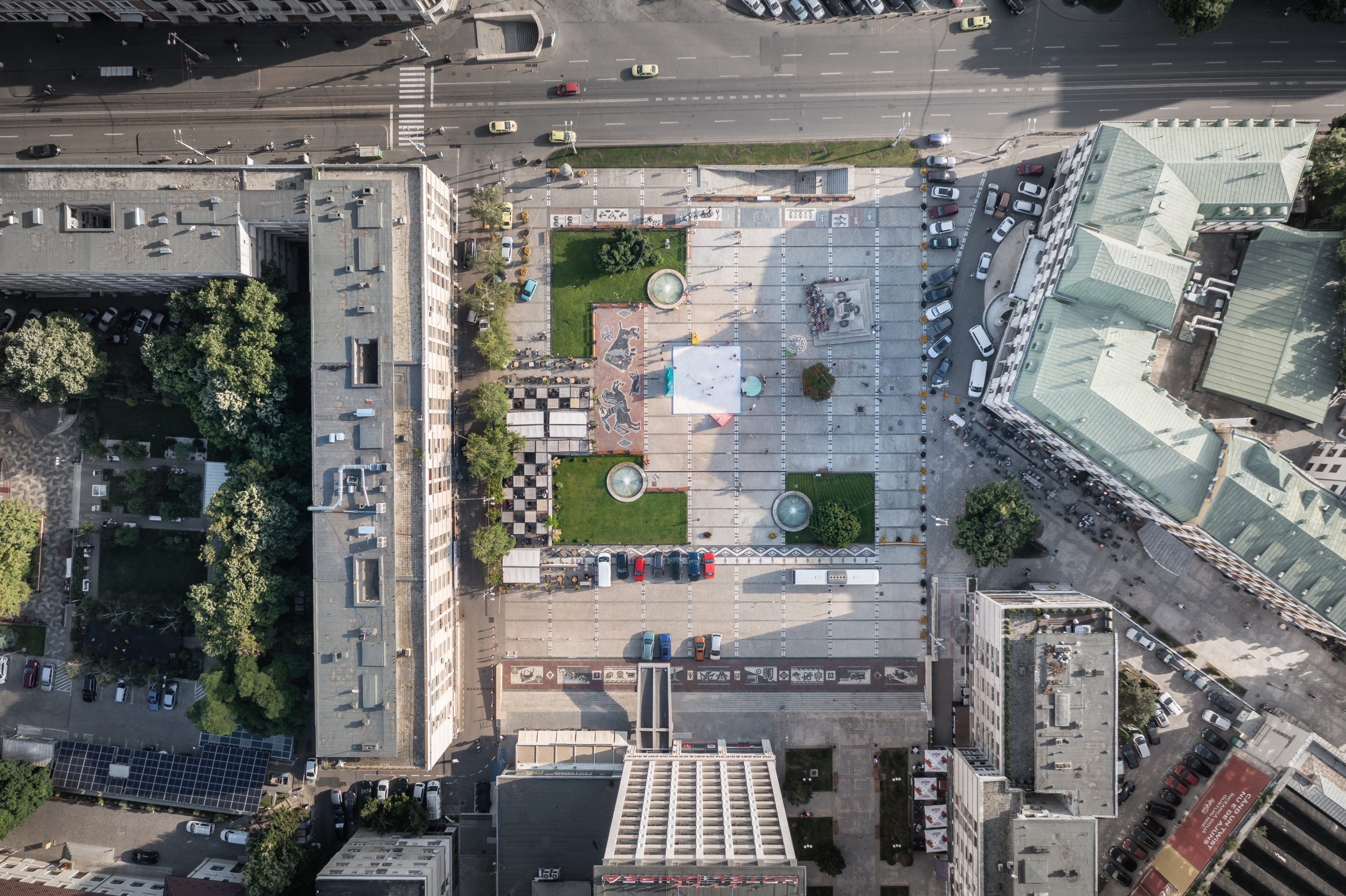Drawing Theatre x Studio Ossidiana
Conceived as a life-sized drawing board and an open public stage, Drawing Theater—the temporary pavilion designed by Studio Ossidiana—reimagined Piața Unirii in Iași as a playful and porous urban field. The installation marked the inaugural edition of Common Imaginary, a new architecture biennial initiated and curated by AÉ02 as part of Romanian Creative Week 2024. Through this platform, AÉ02 launched an ongoing program of site-specific architectural interventions that explore new forms of spatial engagement and inter-institutional dialogue.
The Common Imaginary biennial emerged from AÉ02’s broader practice, defined by a methodological commitment to collaboration as its design ethos. Each edition is structured as an invitation extended to a guest architecture studio, allowing them to respond freely to a given context, thereby enabling a dynamic of shared authorship, site research, and public engagement. The first collaboration, with Studio Ossidiana (Rotterdam), set the tone for the biennial’s approach: speculative yet grounded, playful yet precise.
Studio Ossidiana, led by Alessandra Covini and Giovanni Belloti, proposed a mineral stage that blurred the boundary between installation and infrastructure. Drawing Theater was composed of a circular bed of loose gravel—a mutable, participatory surface on which the public was invited to draw, compose, and erase ephemeral bas-reliefs using sculpting tools. The project was inspired by local references, including the stone ornamentation of Trei Ierarhi Church, traditional agrarian tools, and the daily patterns of movement across the square.
Play, for Studio Ossidiana, is not simply decorative, but a critical architectural tool, capable of opening spatial imaginaries. Their work draws from figures such as Cedric Price, Aldo van Eyck, and Lina Bo Bardi, activating what they describe as „sentimental scale” through installations that reconfigure public space as a site of collective storytelling. „Play doesn’t just add value to everyday life—it transforms it,” the architects note. „It replaces the familiar with the strange. It’s a form of abstract thinking that we share with other species, and in architecture, it allows for alternative systems, gestures, and relationships to emerge.”
This conceptual framework resonated strongly with the ethos of Common Imaginary. For AÉ02, the biennial functions not merely as an exhibition format, but as a situated methodology, a way of producing architecture through critical hosting, dialogue, and performative construction. The collaboration with Studio Ossidiana exemplified this approach: from initial exchanges and contextual research to material experimentation and public activation, the pavilion unfolded as a process of co-authorship embedded in place.
The installation also emphasized the narrative potential of soil and sediment, elements that Studio Ossidiana often uses as both metaphor and material. „Soils are the greatest storytellers,” they note, „reminding us that we are neither masters nor bystanders of nature. Everything we do leaves a trace.”
After the festival, in a gesture aligned with both studios’ social commitments, the pavilion was donated to the Casa Bună Association, where it will be reinstalled in the yard of a future kindergarten serving children from vulnerable communities, extending its life as a space of care, play, and architectural agency.
Project Specs:
Project: Drawing Theater
Location: Piața Unirii, Iași
Architecture: Studio Ossidiana
Curated by: AÉ02
Execution: LemnArtis
Completed: 2024

